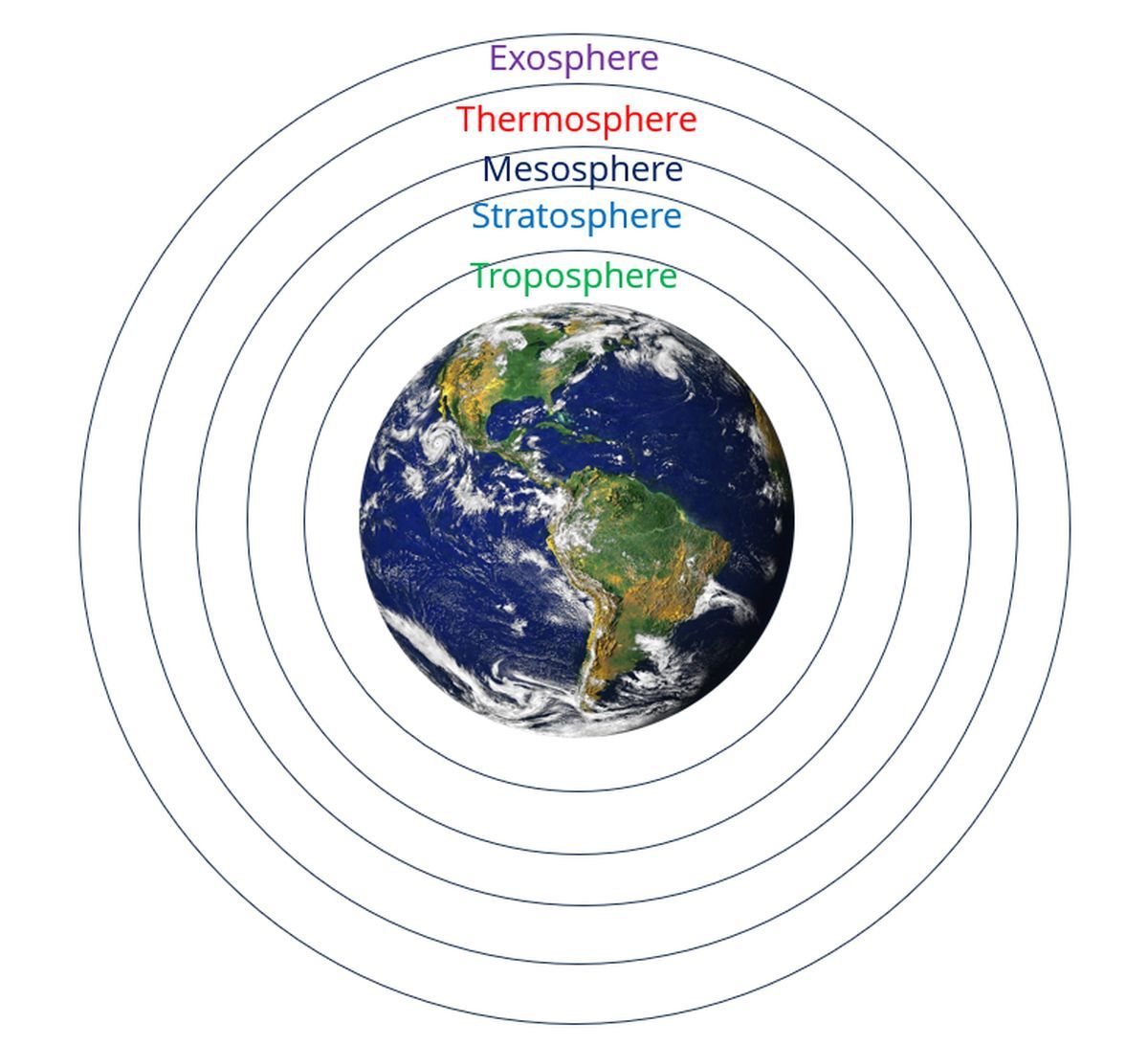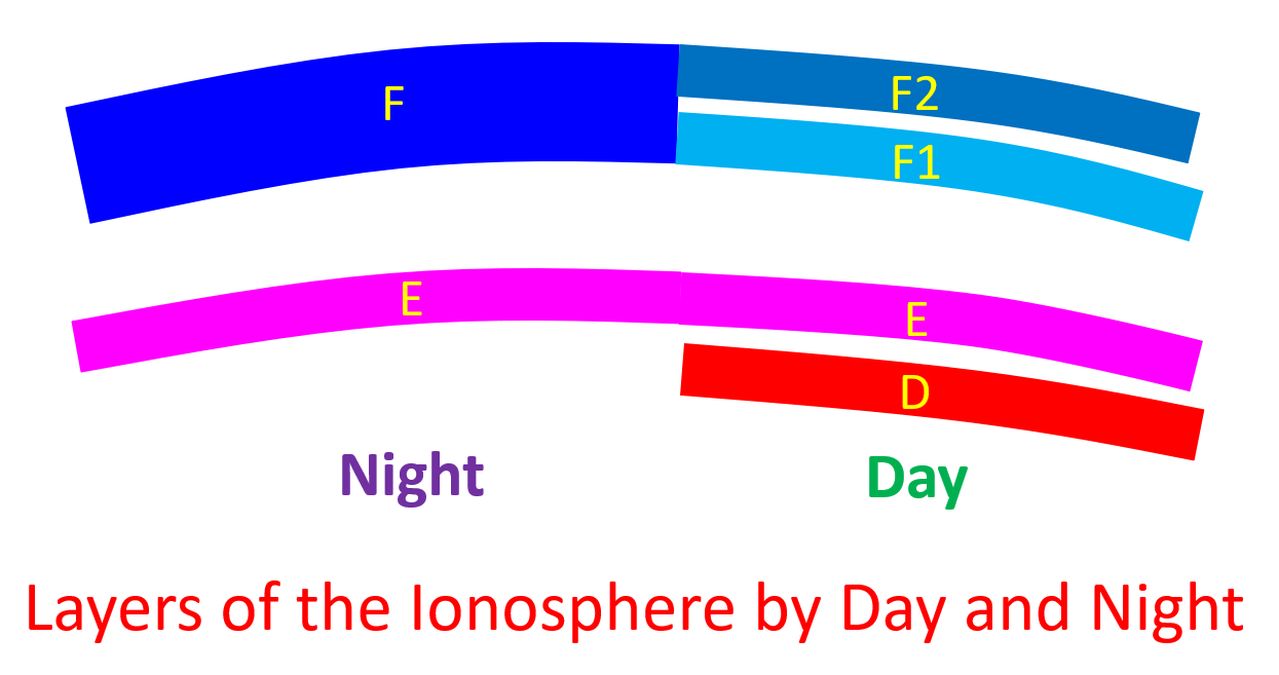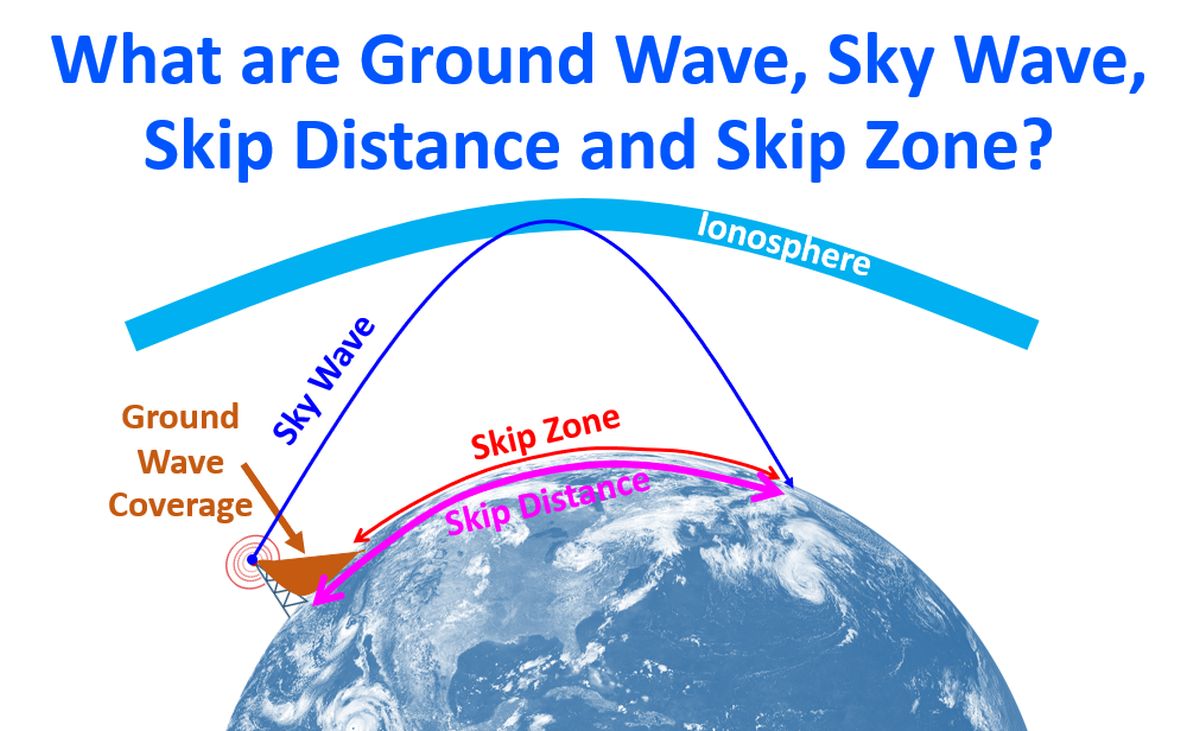Layers of Ionosphere and Importance in Radio Communication
Layers of Ionosphere and Importance in Radio Communication
Here is the transcript of the video: Today we will discuss about the importance of ionosphere in radio communication. Ionosphere is a layer of the atmosphere which gets ionised, mostly during day time, due to the effect of sun rays and it is situated high above the atmosphere, almost the thermosphere. It may extend into the exosphere above and mesosphere below. When radio waves reaching the ionosphere has a critical frequency, above which it will just radiate out into the space. That is why VHF and UHF radiae straight to the space. But HF, below that critical frequency, will be reflected back to the earth, and to the ground, which will skip around the earth, and produce long distance communication.

These are the layers of the atmosphere. The lower most is the troposhpere. That is the place where we are all walking about, lower most layer of the atmosphere. Then comes the stratosphere. Beyond the stratosphere, you have the mesosphere, still beyond is the thermosphere and outermost layer is the exosphere. As you go up from the earth, due to the reduced effect of gravity, the atmosphere becomes thinner. So the number of air molecules will be least in the exosphere and maximum in the troposphere. Temperature also goes down, as you go higher up. Our region of interest for radio communication is the thermosphere, because, the ionosphere is mostly located in the thermosphere. But ionosphere is not a static situation. When sun comes up, more of solar ionization occurs in the thermospher or that region of the atmosphere, so that ionosphere can extend, sometimes out into the exosphere and down into the mesosphere. It may range from 60 to 300 km from the surface of the earth. So it is not a static condition. At day time, there is more ionization, at night time, ionization is less. Similarly, when the solar activity is more, with more of sunspot activity, ionization increases. Currently we are in solar cycle 25, and we are reaching the maximum in another one or two years. When the maximum is there, ionospheric condition will be better for long distance propagation and you will have more of ions in the ionosphere, due to solar sunspot activity.

These are the layers within the atmosphere, by day time and night time. Lower most is the D layer. D layer is the one which absorbs medium waves, so that medium waves will not get reflected by the ionosphere, and depends only on local propagation, that is ground wave propagation. But at night what happens is that, the D layer disappears, due to decreased ionization. Then medium waves can penetrate up to the E layer and get reflected like this. Suppose this is the transmitter here, it can go up and then get reflected. That is why, you would have noticed that medium wave stations at a longer distance can be heard at night, with better clarity. And E wave, oh sorry, E layer is the one which reflects the short waves usually, because short waves will not be absorbed by the D layer and they will be reflected by the E layer. Still higher frequencies in the short wave, will go beyond the E layer, and get reflected from the F1 or F2 layer. The difference between F1 and F2 is that, when there is higher ionization during day time, F layer splits into two, F1 and F2. At night, when the ionization decreases, these two layers fuse together and there is only one F layer at night and there is only one E layer. There is no D layer at night, E and F only at night, while at day, they have several layers, one is E, which absorbs the medium waves, E which refects short waves of the lower range, F1 and F2 which reflects short wave of higher frequency. When the frequency goes beyond that range, this, beyond say 30 MHz, usually, it may not get reflected by any of these layers and will go straight to the space. That is why, for VHF and UHF, and higher ranges of frequency, you do not have this sky wave propagation, from the transmitter into the sky, back to the earth. That is sky wave propagation, which I will show in another diagram.

These are the sky waves which we were talking of. This is the representation of the ionosphere, and this is the transmission. When there is a transmission, the ground waves cover only a small region. This is more commonly seen for, ground wave is more commonly seen for medium wave transmission. And for short waves, when it is going at a critical angle, it will get reflected off the ionosphere and come back to the earth, at a distance. This distance is known as skip distance. And the distance between the end of the ground wave propagation, that is here, and the place where the nearest skip of the sky wave occurs, is known as skip zone. The skip zone, importance of skip zone is that, if you have a radio here, nothing will be heard in this region. This is more when the frequency increases. For example, for a 7 MHz wave, may be it will come down here and for a 14 MHz, it will have a higher hop. That is why you would have noticed that you will hear long distance stations better on 14 MHz, and short distance stations better on 7 MHz. In amateur radio, 7 MHz is most popular for short distance communications, while 14 MHz and higher bands are popular for long distance communications. That is because of this skip zone and skip distance. The skip zone and skip distance are not static, it will change according to the ionospheric ionization conditions. It will be different at day time and night time, as well as between morning and noon, there will be difference, because, ionospheric ionization condition changes.